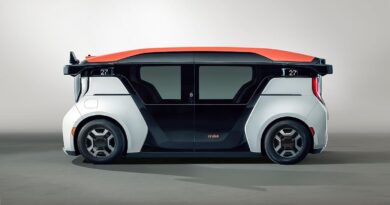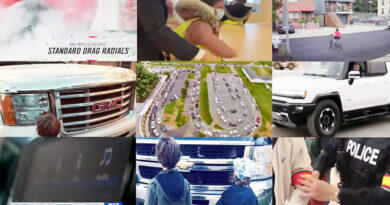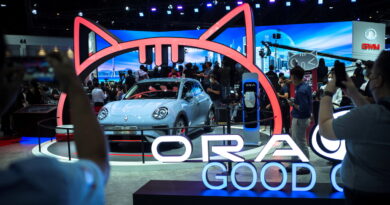Lidar maker Luminar’s CEO talks insurance and path to profits
Even as it posted losses that topped $400 million last year, lidar maker Luminar Technologies sees a path to profitability by leveraging its relationships with automakers and pursuing partnerships in the
Plans include building a new manufacturing facility in Mexico, developing a new line of automotive sensors and hunting for strategic acquisitions.
The Orlando company is forgoing using a Tier 1 supplier to reach automakers and is instead establishing direct relationships with customers that include Mercedes-Benz, Volvo, Polestar and Daimler Truck Group. Luminar executives say they expect to book at least $1 billion in business in 2023.
CEO and founder Austin Russell, 28, spoke with Staff Reporter Karn Dhingra about the company’s business strategy. Here are edited excerpts.
Q: What’s your sense of the competitive landscape in the lidar space and where Luminar fits in?
A: Our ambition is to go far beyond the fundamentals of just a lidar business. I want the opportunity to build one of the great technology companies of our generation. Lidar is very small compared to what it can be. Right now, maybe less than 1 percent of vehicles on the road are equipped with lidar.
There’s an opportunity to increase that. It’s not just trying to win the lidar game today. It’s about eventually having Luminar lidar on every new vehicle produced and building value across the board in other areas that add to the consumer experience.
Ultimately, revenue and profits will result from that effort.
What is the auto insurance play?
We have our business selling lidar systems and software. But insurance is clearly such a critical part of the overall car ownership experience. When you have something that can dramatically increase the safety profile of a vehicle, naturally, the cost of insurance could and should come down substantially.
Ultimately, it could pay for the cost of a lidar system and then some, potentially even multiple times over. What made it very real was partnering with the second-largest reinsurer in the world exclusively to make this happen.
It’s an opportunity for us to make some serious revenue and profits for Luminar. We’re basically taking what we do in the vehicle already and then expanding upon that with different layers of software and services to create additional value.
Can you give an estimate of prices and profits and how this would be offered to consumers?
Effectively, we’re talking as much as a double-digit percentage reduction in insurance rates for consumers over the 10-year lifespan of a vehicle. That would be thousands of dollars worth of savings for a consumer. This would be applied towards Luminar-equipped vehicles, with our lidar and/or our software.
The first phase of this plan would help existing insurers lower their rates. The second phase is launching our own insurance product that appends onto a Luminar-equipped vehicle, either directly with us or offered in some cases in partnerships with OEMs to enable a reduced total cost of ownership of the Luminar system.
What’s the thinking behind Luminar working directly with automakers instead of going through a Tier 1 supplier?
Working directly with automakers is critical to our success. A lot of people were very skeptical and did not think a new technology company could establish direct partnerships with automakers. Typically, a company licenses technology to a traditional Tier 1 provider, and then they maybe make something of it, maybe they don’t, over a long period of time.
The key is the collaboration, speed and the willingness to adopt breakthrough technology. Automakers want to become like technology companies and bring these technologies to market as quickly as possible through similar strategies.
We can capture the revenue and profits directly, as opposed to fractions of it through another provider of the technology. It’s a huge advantage, not just from a technology standpoint, but also a business standpoint.
Luminar didn’t go through the Tier 1’s because they didn’t have the relevant experience in building and working with highly specialized optical laser systems. They’re used to working with traditional mechanical and electronic systems. We hired a lot of relevant people from Tier 1 companies. But having that homegrown experience in-house made all the difference.
Your presentations deempha- size the robotaxi/autonomous vehicle business and emphasize consumer vehicles and trucking. Why?
It’s all about enhancing the driver, not replacing the driver. We’re focusing on making cars safer and enabling autonomy in more constrained scenarios like highways. It’s a huge difference versus trying to solve the extremely complex problem of replacing drivers, which is the focus of many robotaxi companies. I think it’s very promising over the long-term, but we’re talking a decade plus-type timeline.
The largest robotaxi fleets that are out on the road today are in the hundreds. We have millions of cars that are contracted to have our technology on them. I think that is very distinctive when it comes to the opportunity we have because we can generate real revenue, real profits. I also don’t think car ownership is going away anytime soon.
Ultimately, we will work with a lot of those robotaxi companies. But we’re very focused on consumer vehicles and trucking today and what we could do for the next decade or two in terms of those improvements, and then expanding when the technology is ready.
Source : Autonews.com




